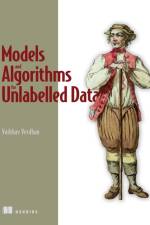- Concepts and Practical Implementation Using Python
av Vaibhav Verdhan
851
Gain a thorough understanding of supervised learning algorithms by developing use cases with Python. You will study supervised learning concepts, Python code, datasets, best practices, resolution of common issues and pitfalls, and practical knowledge of implementing algorithms for structured as well as text and images datasets.You'll start with an introduction to machine learning, highlighting the differences between supervised, semi-supervised and unsupervised learning. In the following chapters you'll study regression and classification problems, mathematics behind them, algorithms like Linear Regression, Logistic Regression, Decision Tree, KNN, Naive Bayes, and advanced algorithms like Random Forest, SVM, Gradient Boosting and Neural Networks. Python implementation is provided for all the algorithms. You'll conclude with an end-to-end model development process including deployment and maintenance of the model.After reading Supervised Learning with Python you'll have a broad understanding of supervised learning and its practical implementation, and be able to run the code and extend it in an innovative manner.What You'll LearnReview the fundamental building blocks and concepts of supervised learning using PythonDevelop supervised learning solutions for structured data as well as text and images Solve issues around overfitting, feature engineering, data cleansing, and cross-validation for building best fit modelsUnderstand the end-to-end model cycle from business problem definition to model deployment and model maintenance Avoid the common pitfalls and adhere to best practices while creating a supervised learning model using PythonWho This Book Is ForData scientists or data analysts interested in best practices and standards for supervised learning, and using classification algorithms and regression techniques to develop predictive models.



